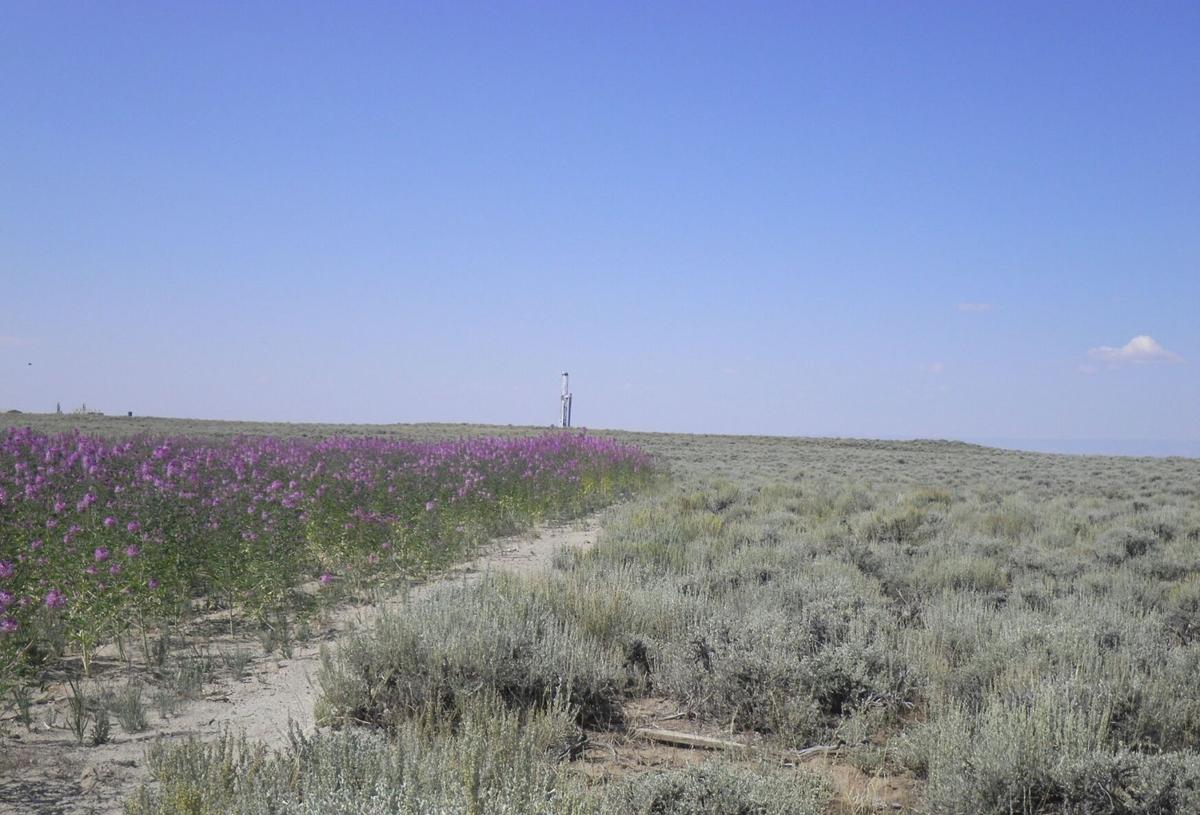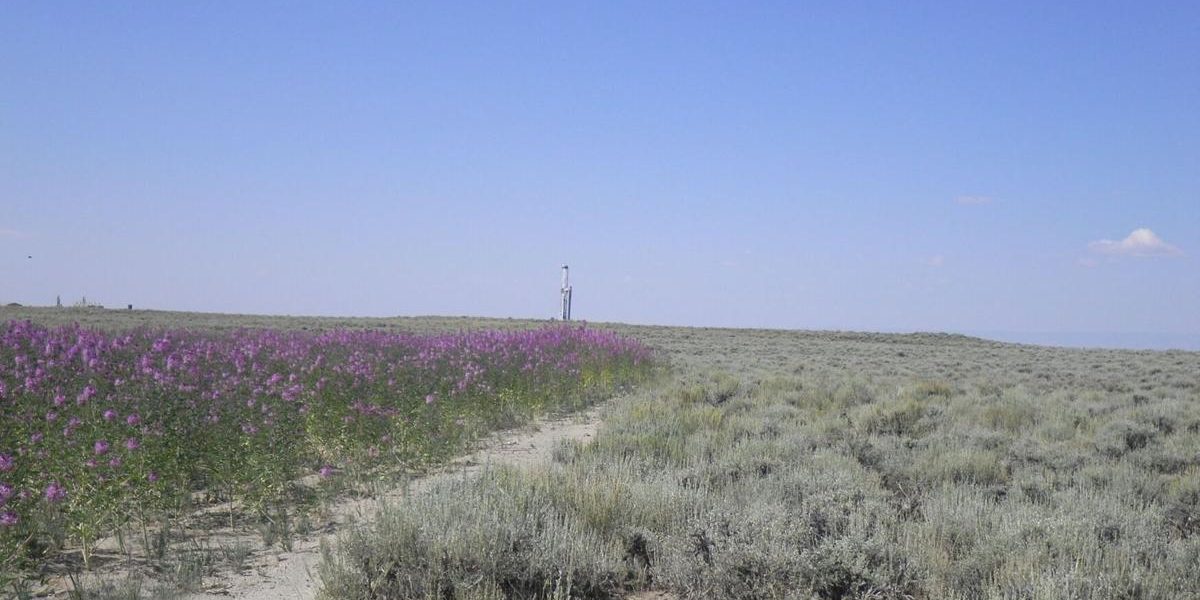
By Zak Sonntag
Casper Star-Tribune
Via- Wyoming News Exchange
CASPER — As fickle spring weather finally settles over the high desert landscape of the Upper Green River Basin, carpets of Western yarrow and blue Lewis flax are starting to spread across the rolling steppe. Fiery pockets of scarlet globemallow begin to flicker among the sage brush, and at last will come the blooms of Rocky Mountain Bee Plant, a tall prairie flower whose stunning purple petals are an irresistible draw to hummingbirds, butterflies and bees.
And to think: It’s all happening on the sites of former oil and gas well pads.
Oil field reclamation efforts in the Upper Green River Basin provide a stark contrast to the typical imagery associated with energy development, where disaster spills and despoiled landscapes commonly come to mind.
“Anytime we ever hear of oil and gas, it’s the gulf spill, or a pipeline blowing up, or global warming. Nobody seems to realize that there are people that dedicate their entire career to putting the land back together for these companies,” said Mike Curran, ecosystem scientist who works with Jonah Energy on reclamation research and implementation across the company’s vast lease areas in Sublette County.
Though this work is often unsung, Curran is feeling rosy because Jonah Energy has just won the most prestigious award in the world for reclamation science for its work in Wyoming.
The American Society of Reclamation Sciences awarded Jonah Energy the “Distinction in Reclamation Award,” considered the highest accolade in the field, on Friday.
It marks the first ever distinction award won by an oil and gas company, and comes as the latest in a growing list of reclamation laurels for the Cowboy State.
The success is additionally impressive for the bare facts of the landscape itself: Cold, dry, with fewer than 39 frost-free days and only four inches of rain annually, nothing grows easily here.
“I think you can make a really strong case that it is the hardest state in the lower 48 to do reclamation work,” said Curran, who this year was individually awarded the Early Career in Reclamation award by the society.
Despite these odds, the Jonah restoration team showed that not only can development sites be returned to serviceable habitat, but they can be restored to healthier conditions than before, giving a leg up to the area’s iconic wildlife — including pronghorn, sage grouse, burrowing owls and golden eagles.
Across the company’s 9,000 acres of responsibility, predominantly on federal lands, the reclamation team has increased plant diversity by 77% compared to undisturbed sites in the region and nearly doubled the amount of herbaceous production, which has a multiplier benefit across the landscape.
To begin with, it diversifies the “age-classes” of landscape species, from grasses and flowering plants to forbs and sagebrush.
This increases resilience to disease and environmental stressors like drought, said Joshua Sorensen, reclamation manager for Jonah Energy.
“Some of those reclaims are almost 20 years old. Some of those reclaims are one or two years old. Compare that to the native vegetation that hasn’t seen disturbance for 120 years [in some cases],” Sorensen said. “Those varying age classes make the landscape much more resilient.”
The reclamation work also focuses on bolstering insect populations conducive to both the sage grouse diet and wider landscape pollination.
This was a feat of reverse engineering by Curran, who studied insect dynamics with the aim of curating ideal seed-mixes to strengthen the underlying food web. It is the product of a Jonah-backed research grant carried out by Curran and the University of Wyoming, and a testament to the value of a hands-off, data-driven approach to reclamation work.
“We fund a fair amount of research when we see value in it, but once we provide the money we back off because we don’t want to influence the outcome. We want to see: what does the research tell us? And from there we make improvements upon our program,” Sorensen said.
Curran, who’s been studying ecosystem science for years, said hands-off grants are critical to the wider field of research, and that the benefits are starting to show in the Upper Green River Basin while helping move reclamation away from “shot-gun” application to a data-driven and site specific approach.
“I really commend Jonah Energy because they gave me a lot of leeway with what I wanted to research,” said Curran. “At first there was a lot of hesitancy when they found out what I was doing and wanted to know why I was going out there and studying and killing bugs. But when I got my data and did the analysis, I went back and explained that plant pollinator networks are big things.”
The project lifts the bar and provides an example for improved oil and gas reclamation elsewhere, Curran says, but can also serve as a template for the renewables sector, where wind, solar and transmission built outs result in large amounts of surface disturbance.





